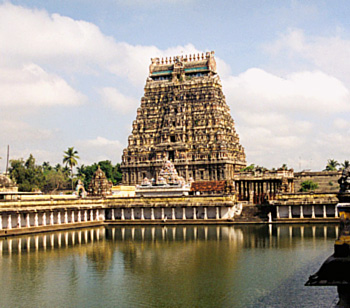 Vikrama Chola, the son of Kulottunga Chola, ruled the Chola kingdom after the successful rule of his father. Vikrama Chola inherited the territories which included Tamil Nadu and some parts of Andhra Pradesh. He managed to recover some territories lost by his father Kulottunga I. During his tenure he effectively checked the Western Chalukya ruler Vikramaditya VI who wanted to capture Vengi. However, it was occupied by them in 1118 AD. After the death of Vikramaditya VI in 1126 AD the Cholas restored their power in the Vengi kingdom. They had also recovered Kolar and some other parts of Gangavadi.
Vikrama Chola, the son of Kulottunga Chola, ruled the Chola kingdom after the successful rule of his father. Vikrama Chola inherited the territories which included Tamil Nadu and some parts of Andhra Pradesh. He managed to recover some territories lost by his father Kulottunga I. During his tenure he effectively checked the Western Chalukya ruler Vikramaditya VI who wanted to capture Vengi. However, it was occupied by them in 1118 AD. After the death of Vikramaditya VI in 1126 AD the Cholas restored their power in the Vengi kingdom. They had also recovered Kolar and some other parts of Gangavadi.
Before becoming a king, Vikrama Chola was a Viceroy. On his father`s behalf marched towards the kingdom of Kalinga in 1110 AD. He defeated Telunga Bhima of Kulam. The Western Chalukya ruler Vikramaditya VI had annexed the Eastern Chalukya territories in 1118 AD. When Vikramaditya died in 1026 AD, Vikrama Chola reclaimed the lost territories. As per some historians Vengi was recaptured with the help of many local chiefs of surrounding regions. The local Telugu chiefs preferred the Chola lordship over the Western Chalukyan dominance. Vikrama had sent his son Kulothunga Chola II on an expedition against Vengi. The Velanadu Chodas, Giripaschima and Konakandravada also helped the Chola army. The Chola supremacy was firmly re-established with the defeat of the Western Chalukyas. Vikrama Chola also accomplished in recovering Gangavadi, which was lost to the Hoysalas in 1118 AD. However he was unable to recapture it fully, he annexed parts of Gangavadi.
During Vikrama Chola`s reign the country suffered from severe floods and droughts too. Most of the northeastern regions were affected by this calamity. In 1125 AD North and South Arcot districts experienced floods and famine.
Vikrama Chola was a great devotee of Lord Shiva and patronised the temple at Chidambaram. In 1128 C.E. he made donations for the up gradation and extension of the temple. In his inscriptions he has been assigned titles like Tyagasamudra and Akalanka that indicates his kindness and moral purity. His son Kulothunga Chola II succeeded the throne after his father`s victorious rule.



















